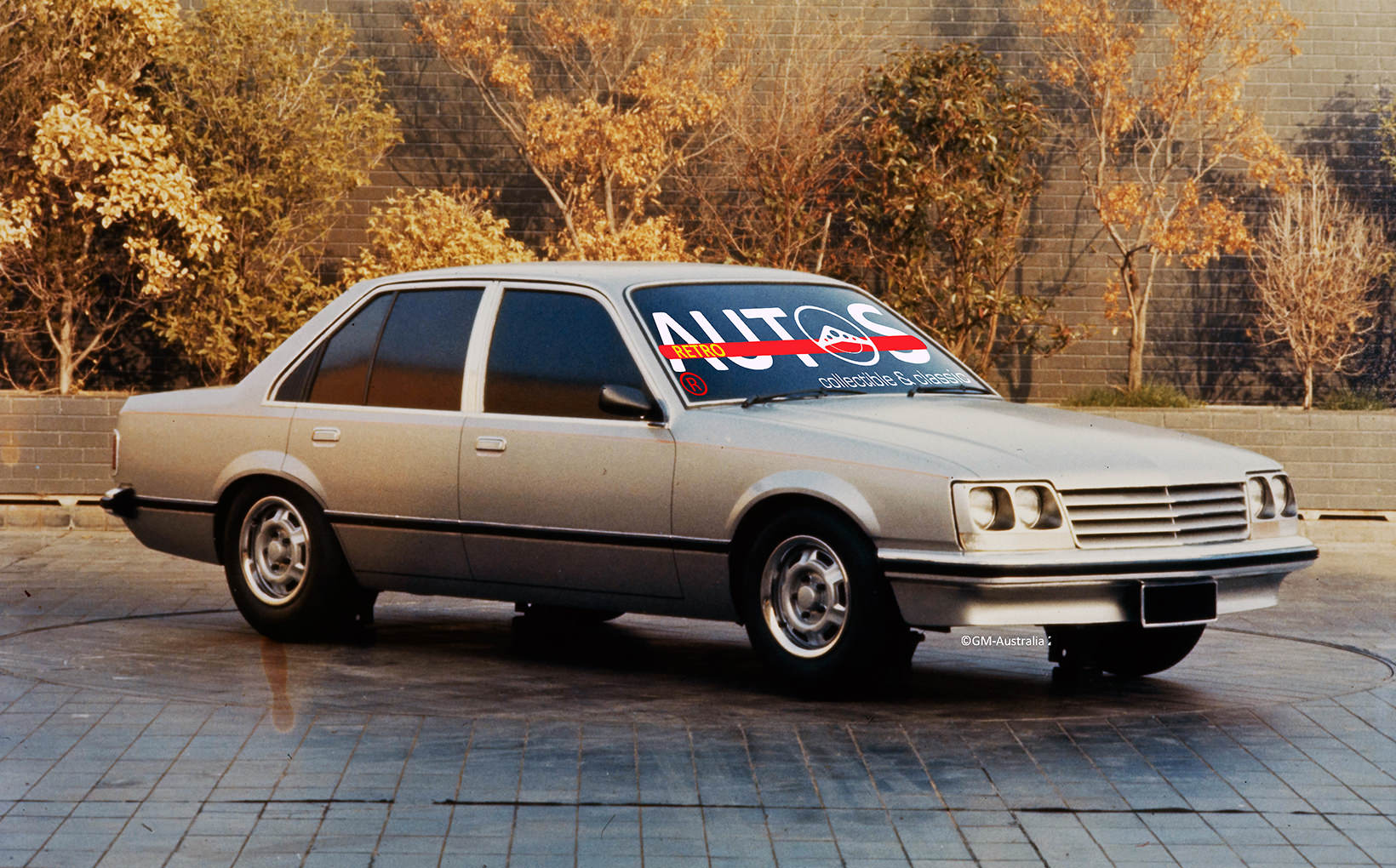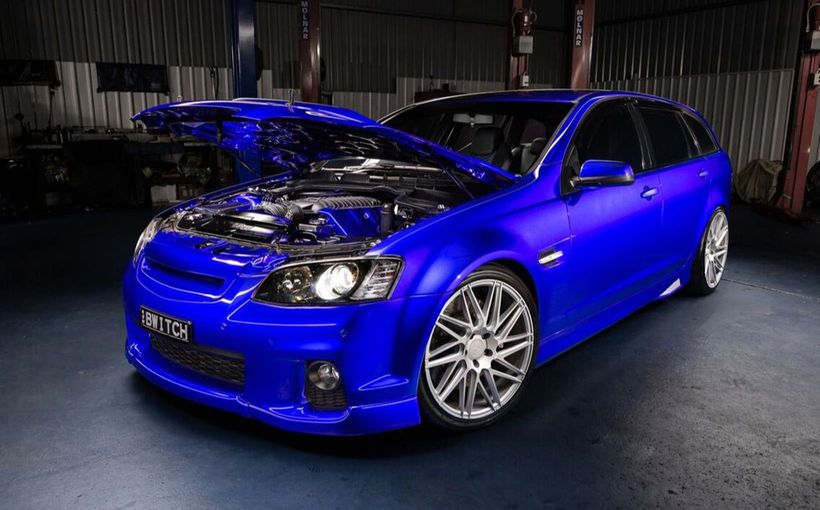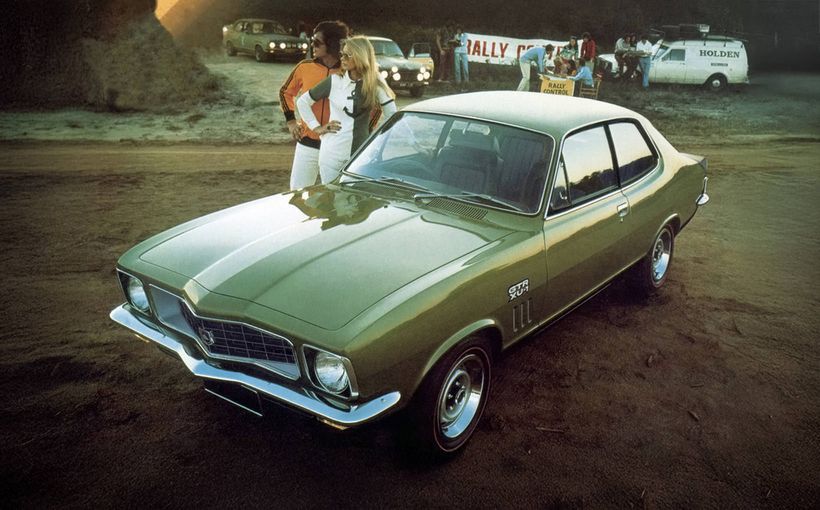More VB Commodores we NEVER saw: Statesman, Hatchback and Commercials

When General Motors Holden (GMH) released the VB Commodore in October 1978 they had high hopes for its success. The company’s market share, as recorded in their annual reports, had plummeted from 33.4% in 1971 to just 26%. For the second year in a row, they had made a financial loss. Much was riding on this new car.

The Commodore—sedan only—appeared amidst a barrage of publicity. The motoring media lauded it for being the right size in a world of oil supply restrictions and rapidly rising fuel prices.
At first, the public was also attracted to this new size and many appreciated it was a return to a “sensibly” family sized car, with almost identical dimensions to the 1963 EH Holden.


GMH did not hide the fact the Commodore was a derivative of General Motors’ (GM) V-car, the Opel Rekord/Senator and Vauxhall Carlton/Royale twins. The company talked up the $110 million spent to ensure the VB was rugged enough for our local conditions. They positioned its European shape as the:
“state of the art in world automotive design.”

What the publicity blurb glossed over was that the styling had been locked in with almost zero GMH input. A road test report of the VB in the January 1979 edition of Wheels quipped:
“As one man said, ‘The Germans design good cars, don't they?’”
Also downplayed was the age of the engines hidden behind the sleek sheet metal. They were certainly not “state of the art”, having been developed in the early 1960s. Ford would later exploit this very effectively.
V-car: Design to Driveway
According to David Booker on his Vauxpedia website, the V-car’s journey from design to driveway began back in early 1973. At this time GMH, Opel and Vauxhall were all planning their large and mid-sized cars for the late 1970s.
Vauxhall had just pensioned off its large PC Cresta/Viscount and released its new mid-sized FE Victor Ventora. Although the Victor/Ventora sat on a 105 inch/2670mm wheelbase, it had to do double duty as Vauxhall’s prestige offering because Vauxhall could not afford to replace the PC range. It was clear that by 1978 the FE itself would require replacement.

At Opel, its large prestige Kapitan/Admiral/Diplomat (KAD) sedan was due for renewal in 1978, as was the mid-sized Rekord. The Rekord and FE Vauxhall were mostly the same car under their different sheet metal.


Meanwhile, GMH was developing the HV/WA and UD/UE/VA ranges as their family and mid-sized offerings, respectively.



In Europe, after a hesitant start, GM settled on a reasonably clear vision of what it needed to do. Vauxhall and Opel would develop mid-sized and large size models which would share a common platform. There would be two wheelbases: 105 inches/2670mm and 108 inches/2743mm. The larger car was to be about three inches/76mm wider than the mid-sized car.
Opel was tasked with developing the large sedan and wagon. Vauxhall’s responsibility was the five door hatchback. The Rekord replacement was an Opel project. Vauxhall would use the Rekord, with changes to the grille for its FE Victor/Ventora successor, the Carlton. The launch date for these cars was set for late 1977.


In Australia, GMH’s senior executives were less clear about their product future. With their market share falling and profits reducing GMH delayed replacing the HQ until 1974 and cancelled the WA, HV, WB, UD/UE/VA programs. I have comprehensively covered this saga in previous editions of Retroautos®. See links at the end.

The Vauxhall design team was led by Ed Taylor with Wayne Cherry assisting. At Opel, Henry Haga and George Gallion held those roles, respectively. They had their initial design proposals ready for review in Detroit at the end of 1973.


Approval for the large car was withheld, because GM’s senior executives believed it did not look important enough for the prestige market. The Rekord/Carlton’s overall styling was approved with suggestions for refinement. The final Rekord/Carlton shape was selected from two very similar proposals and approved in January 1975.





It was during the Rekord/Carlton’s final styling phase, that GM made the decision to halt work on the large car, and use a modified Rekord/Carlton instead. This prestige model featured a six-window upper body, new roof line and longer front fenders. The latter was to accommodate a six-cylinder engine. The wheelbase was stretched a mere 0.7 inch/18mm. A coupe was added to the lineup. The narrower Rekord/Carlton width was retained. These cars were released as the Opel Senator and Vauxhall Royale.



While all this was happening, Holden had joined the V-car program in 1974. The idea was that Rekord/Carlton would replace the LH/LX Torana. This led to the cancelling of the UD/UE/VA Torana.
That plan changed when GMH’s new managing director, Chuck Chapman—he arrived in December 1975— decided the V-car would be Holden’s mainstream offering. Chapman had been GM’s chief engineer in Europe and was closely involved with the V-car’s development.
Given that the styling of the V-car was fixed, the design team at GMH, led by Leo Pruneau, had little to work with. It was Leo’s second stint at GMH. He’d been assistant design director from 1969 to mid-1972 and returned in June 1975 in the top role.

Leo recalls that a primary focus was to make the V-car look more imposing and wider without spending much money. Most of the development budget was being consumed to “Australianise” the V-car and re-engineer it to fit a V8 and the “red” sixes
One proposal involved quad headlights. This pleased the bean counters as it was $10 a car cheaper than the larger rectangular lights Leo was suggesting. Trouble was, the four headlights were small and looked out of place.

GMH’s sales director John Bagshaw agreed with Leo and vetoed the quads, preferring the bold appearance of the rectangular lights despite the additional cost. A more imposing grille was fitted with strong horizontal lines along with a large Holden badge. Chrome trim across the leading edge of the bonnet added to the visual presence.

Although there was no money in the budget, except for a wagon (and even it was an Opel design), Leo and his team created a complete range for the VB just in case it was needed. From these renderings, many never seen before, we can imagine what might have been. Except for the hatchback, the renderings are the work of Tom Matano and the late Chris Emmerson.
Tom started with GM in Detroit and then spent seven years at GMH. In late 1982 he moved to BMW in Germany and then to Mazda in the USA twelve months later. At Mazda Tom designed the MX5 sports car. He is currently the Executive Director at the School of Industrial Design, at the Academy of Art University in San Francisco, California, a design consultant and automotive journalist.
Chris had a 13 year career at GMH where he was renowned for placing his styling ideas in evocative settings. After GMH he set up his own design consultancy and then was a faculty member at the RMIT design school.

Statesman

This wonderful Cadillac-esque drawing by Chris Emmerson is dated 1977, and places the VB Statesman outside a UK hotel restaurant.
Hatchback


The hatchback exists only as a line drawing. Using AI, I’ve been able to recreate an approximation. It shows that GMH had an opportunity to create a new market segment. Ford had nothing to match a family hatchback.
Utility

Tom and Chris both worked on a VB ute. Chris’s drawing plays on the word “beaut”.


Panel Van


Chris’s van proposal has a raised roof for greater load space.
One Tonner

If it took $110 million simply to ensure the Opel/Vauxhall sedan body did not disintegrate on Australian roads, a one tonner was probably too costly to develop.
What if
These drawings and photos provide a glimpse of “what if”. That they never went beyond the high security doors of GMH’s styling studios is another of those lost opportunities that every car maker in Australia had hidden in their files.
The debate about whether the VB Commodore was the right decision for GMH still endures, and I’ve written on that subject before. When Ford convinced Australian car buyers that its wider and roomier Falcon had fuel efficient engines, the smaller Commodore began to lose its lustre. In 1982 Ford claimed market leadership and GMH slipped further into financial difficulties.



Intriguingly, even as the VB was being released, a very secret project was in development. It was coded VB-W. The photo below is a peak sneak from a future edition of Retroautos®

LINKS:
Retroautos®: VA Torana cancelled
Retroautos®: WB Holden cancelled
Retroautos®: WA Holden cancelled
Retroautos®: Commodores from Design to Driveway Part 1
Retroautos®: Commodores from Design to Driveway part 2
Racing Garage: VB Commodore
Classic Garage: VB Commodore
Retroautos® is written and published with passion and with pride by David Burrell. Retroautos® stories and images are copyrighted. Reproducing them in any format is prohibited. Retroautos® is a registered trademark. Reproducing it in any format is prohibited. Special thanks to John Kyros at GM Heritage and David Booker at Vauxpedia.









